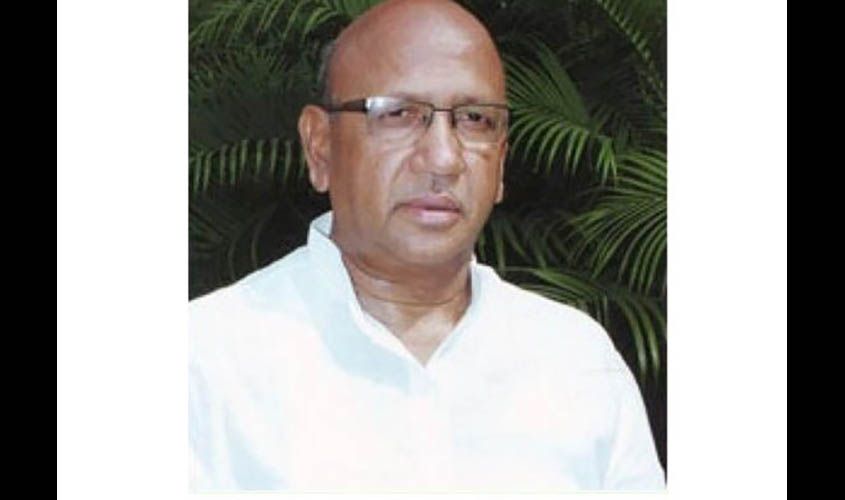Roy demolished the Jamshedpur bastion after a group of dedicated supporters and professionals joined his battle.
New Delhi: For Saryu Roy, it was a Herculean task to defeat serving Chief Minister Raghubar Das from Jamshedpur East constituency, for which he had just 20 days in hand. Though there was strong anti-incumbency against the Chief Minister, it needed a massive push to translate this into votes. But this was made possible after a group of dedicated supporters and professionals joined his battle and worked in “mission mode” to make this possible in such a short span of time, and history was created with a sitting Chief Minister getting defeated. In the recent past, Sheila Dikshit and Shibu Soren had lost elections while being Chief Minister.
Roy was expecting to get the ticket from Jamshedpur West, which has been his traditional seat. However, the Central BJP leadership was delaying the announcement of the candidate, as Raghubar Das was opposed to giving a ticket to him. According to sources, Saryu Roy never lobbied for the seat before senior party leaders, but was expecting that he would be given the ticket finally. There are three seats in Jamshedpur area—Jamshedpur East, Jamshedpur West and Jugsalai.
But when three days were left for filing of nominations, he decided to call a press conference on 16 November in which he announced that he would not contest from Jamshedpur East and that he was “freeing” the party leadership from the dilemma. The next day, he announced he would file nominations from the Jamshedpur East constituency, as an Independent, from where Raghubar Das was contesting. On 18 November, he filed the nomination. Roy, who was minister in the Raghubar Das government, was expelled from the party after the elections.
Abhishek Joshi, a Delhi-based political analyst who was part of the core team managing Saryu Roy’s campaign, told The Sunday Guardian: “The area had been a stronghold of the Chief Minister, who has been winning the seat for the last 25 years. It was indeed a challenge. The decision to contest the elections was taken on 18 November and on 21 November, I reached Jamshedpur to help him out. A crack team was immediately formed with 8-10 people. The campaign was to end on 5 December. ” Both Roy and Joshi are part of the Action Committee Against Corruption in India (ACACI).
He said: “Though there was strong anti-incumbency against the Chief Minister and the government, it was not an easy task to channelise it so that it could be converted into votes. Odds were against us—the entire administration was against us and moreover finance was also a major constraint as Saryuji is not the kind of politician who had amassed money in his political career. It was a formidable contest as we were contesting against a serving Chief Minister.”
The “crack team” soon got cracking. The strategy was not to disturb Saryu Roy, not to involve him in day-to-day affairs. The team asked him to focus on padyatra, door-to-door campaign etc, while the crack team took charge of the management of the campaign. There were several issues. People wanted to meet him. It was a big challenge to cover areas like Birsa Nagar, which has a population of 1.25 lakh, Hume Pipe Road, Agrico, Bhalubasa, Baridih etc, which are major strongholds of the BJP.
The crack team, soon after, went in for “zoning” of workers. Zones were divided and distributed among the workers to conquer. By 26 November, the “crack team” became pretty confident that the winner is settled and that is Saryu Roy. It was just a question of lead. Joshi said: “We could see the kind of anti-incumbency there. It was massive. The Chief Minister’s arrogance was a major talk among the voters. There was clear repulsion for the Chief Minister.”
The Congress had fielded its candidate Gaurav Vallabh from there, but, according to sources, Vallabh did not have recall value. Roy’s team members thought the Opposition alliance would withdraw him from the contest. But when this was not done, they adopted the strategy of ignoring him. Vallabh would shoot five questions every day in the media. Initially, Roy’s team thought of responding, but later on, they started ignoring him. But the interesting part was that Vallabh never said anything negative about Saryu Roy. And Roy’s team also reciprocated by not attacking him. From the initial days, it was very clear that the fight was between Raghubar Das and Saryu Roy. Vallabh came third and got about 17,000 votes.
Apart from the anti-incumbency, another factor which went in Roy’s favour was that he did not allow the demolition of unauthorised colonies in Jamshedpur West. He stood by the residents and asked the administration that the residents need to be resettled first
According to Joshi, the biggest achievement of this election was that they could channelise the sentiment in favour of Saryu Roy. “There was an undercurrent. But it is of no use if you cannot push it to get translated into votes. We went with the old school of politics. No social media, no big hoarding, billboards etc. We just focused on ground level booth management, public outreach and making people understand our point of view. And that worked in our advantage,” he said.
“There was no external funding. Saryuji spent whatever little he had. Then we went in for fund raising, donations etc. We fought at the booth level. However, we got support from workers of the opposition parties, like the RJD, in terms of human resources. There were BJP workers who were unhappy with Raghubar Das, and who stood with us in solidarity. But Saryuji went on his own and did not rely on the rebel group,” he added.

